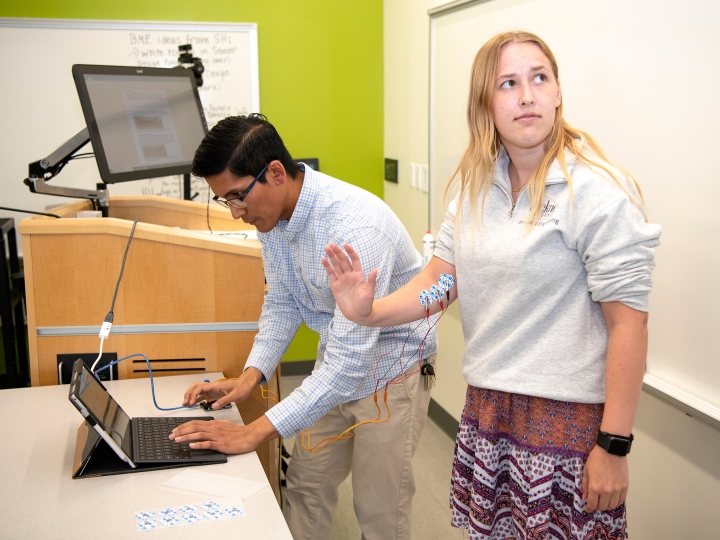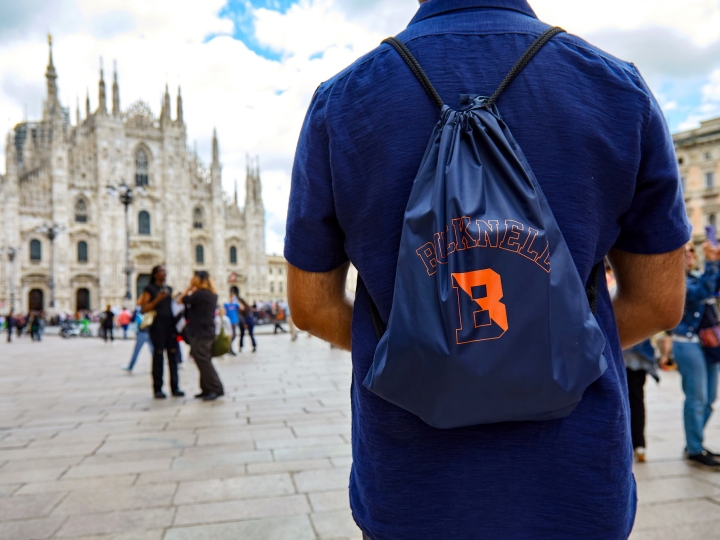Cool Classes: Our Material World
October 9, 2017
What Class? Discovery Residential College Foundation Seminar: Our Material World
Who Teaches It? Professor Donna Ebenstein, biomedical engineering
"We interact with materials every moment of every day. Our clothes, our cars, everything we touch exists because of human manipulation of materials. While the building blocks of modern materials — the chemical elements — occur naturally, artisans, scientists and engineers have, over time, figured out how to process elements to make useful materials that enhance our lives.
"Early humans used the materials they found in their world, such as wood and rock, with very little modification. Later, humans learned to manipulate natural materials through 'heating and beating' (blacksmithing) and combining materials to create composites with enhanced properties. More recently, humans discovered methods to synthesize entirely new materials not found in nature, including the plastics that surround us today.
"This course is part of the Discovery Residential College, so I ask students in the class to constantly consider what 'discovery' means in the field of materials science and engineering. For a given material, this can have many steps, including the original discovery that a material exists or can be created, the discovery of how to process it to improve its properties, and the discovery of how to apply it to a new application.
"Students in this course will not only explore the discovery and evolution of materials, but also consider materials through many lenses, including the historical uses and impacts of materials on society over time and the science behind the properties of materials. Students are asked to consider how a new tool or technology enabled advances in materials development, and also identify areas where development of a new material enabled technological advances. For example, the development of microscopes that allow scientists to visualize the microstructure and even nanostructure of materials has been critical to understanding the basic science of materials, while the development of strong, lightweight composites allows for faster-flying, more efficient aircraft.
"The major writing project for the course requires students to research and write about materials that have some personal meaning for them. For example, if a student plays a musical instrument, they may choose to research one of the materials used in that instrument, or if a student plays a sport, they may choose to research a material used in a piece of sporting equipment.
"I try to include a demonstration in class each week to teach students about an aspect of materials science. For example, to demonstrate the method of freeze-fracturing used in materials science research, I let students dip a flower in liquid nitrogen to freeze it, then shatter it by hitting it against the table. By the end of the semester, students should be able to develop and perform their own materials demonstrations.
"Guest lectures also play an important role in the course, allowing students to hear from faculty in studio art, classics & ancient Mediterranean studies, chemistry, biology and engineering about their use of materials, their research into the history of materials, and their study of the properties of modern materials from both basic-science and application-driven perspectives.
"Material discoveries have impacted how we cook, how we build, how we communicate, how we compute, even how (and what) we eat. Overall, I hope that in this course students will learn to appreciate materials from multiple perspectives, and gain an interest in exploring the world around them."
Are we missing out on a cool class? Send suggestions to coolclasses@bucknell.edu.

